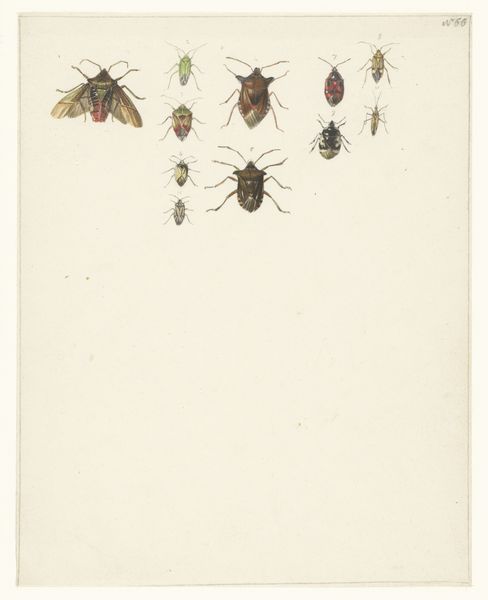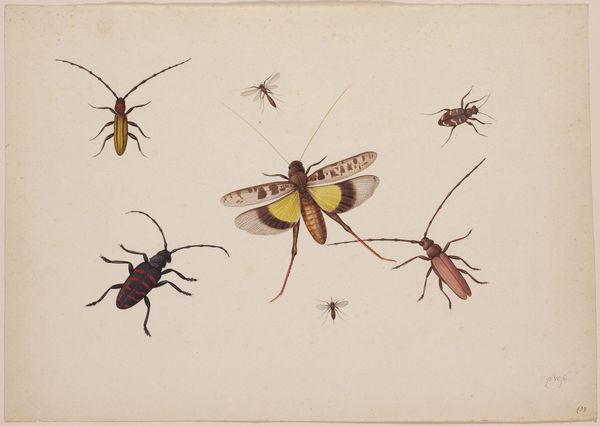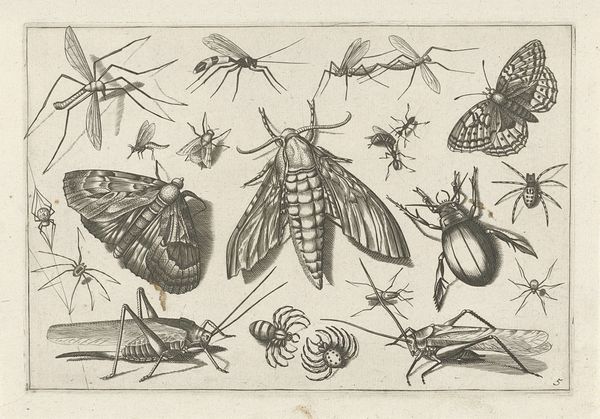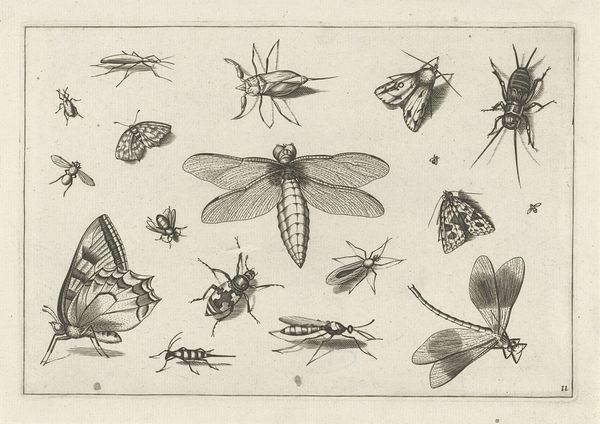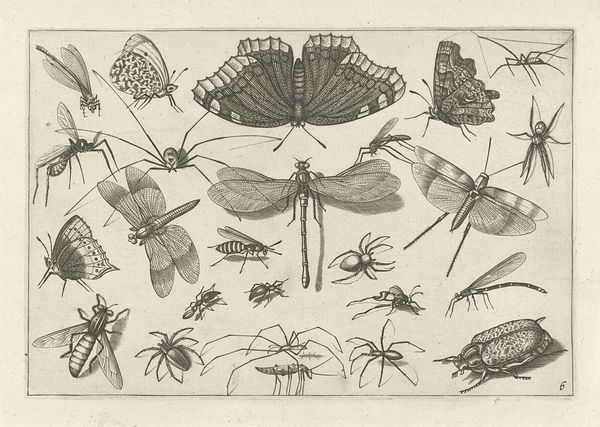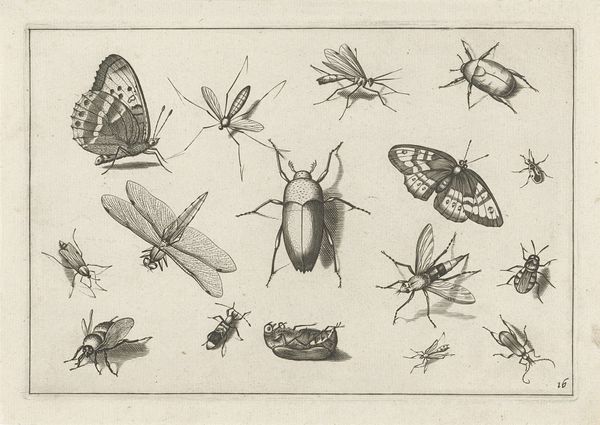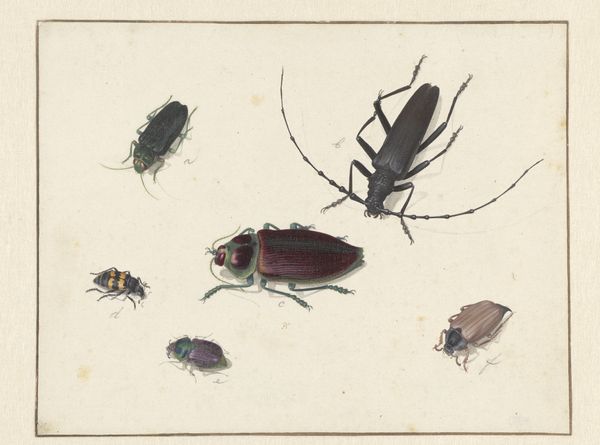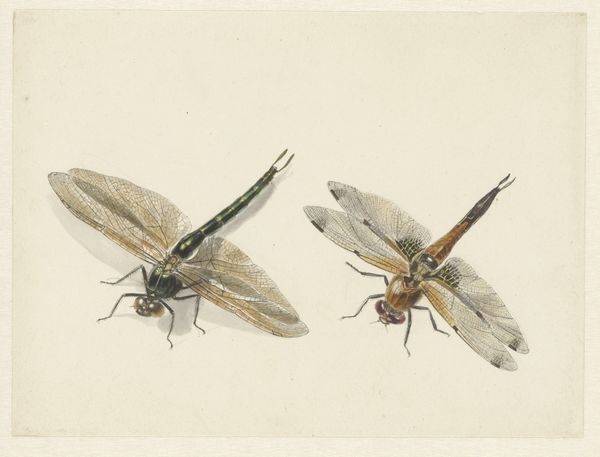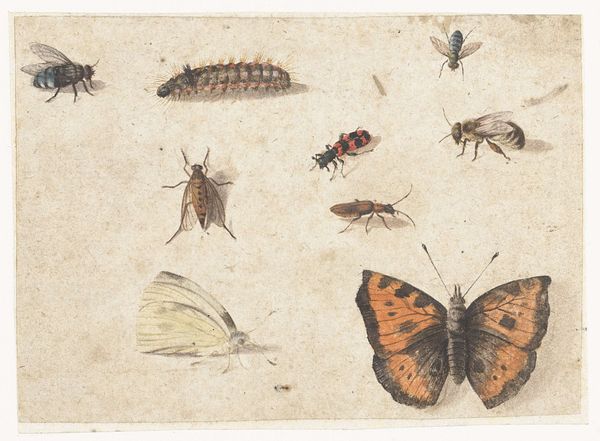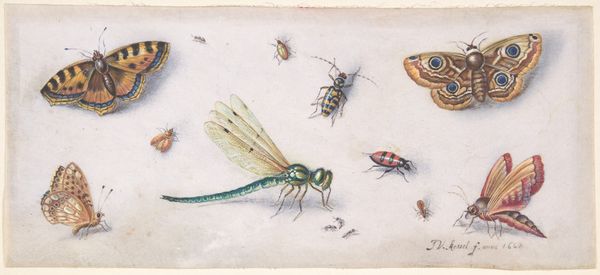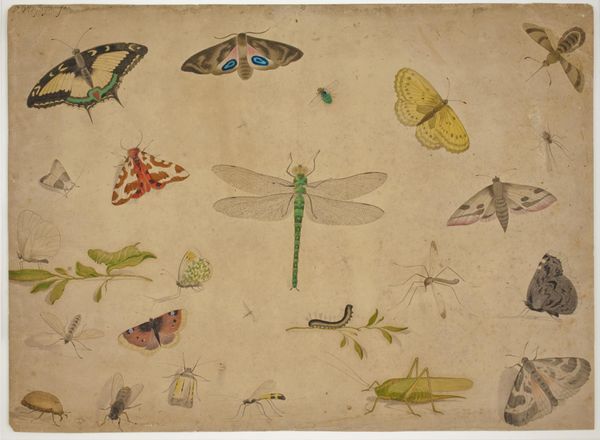
drawing, watercolor
#
drawing
#
11_renaissance
#
watercolor
#
coloured pencil
#
northern-renaissance
#
naturalism
Dimensions: height 450 mm, width 315 mm
Copyright: Rijks Museum: Open Domain
Curator: I find this drawing fascinating, it’s “Dragonflies and Flying Insects,” dating back to about 1560 and rendered by Lambert Lombard. It employs watercolor and coloured pencil to bring a meticulous Northern Renaissance sensibility to these insects. Editor: My immediate sense is one of delicate wonder. The arrangement, though scattered, feels quite intentional and airy, as though each creature has its own defined space on the page. What cultural significance do you think this level of meticulous depiction carries? Curator: Well, depictions like these are far more than illustrations; they represent a period increasingly absorbed in observation and taxonomy, reflective of the rising scientific curiosity. To depict the natural world with this degree of realism carried significant weight—demonstrating mastery of artistic skill, but also implying a larger ordering of knowledge in the world. Editor: It's interesting to think about this in relation to the period's socio-political climate. The Reformation and its associated cultural shifts were happening. How might the intense study of detail also become, say, a coded way to reaffirm humanist values and rational inquiry, even amidst religious upheaval? Curator: That's astute. Insects, with their complex anatomies and behaviours, could certainly become emblems of a God-given intricate design that called for careful study rather than blind faith. The precise observation acts almost as a form of secular devotion, mirroring but subtly critiquing theological stances that rejected empirical knowledge. Editor: So, even an image of dragonflies becomes something of a battleground for ideas? I am curious about the seemingly arbitrary placement on the sheet, does that say anything about this move from strict theological stances of that time to a new belief system? Curator: On the surface, it does appear almost casually strewn, doesn’t it? The composition perhaps suggests the very act of collecting, classifying—each bug pinned as a specimen. That order wasn't imposed from above but gathered bit by bit through individual effort, each one reflecting the order and majesty of the world through details. Editor: It's funny, seeing these beautiful insects now, detached and framed. It makes me ponder about how we have transformed understanding and learning in the modern-day age versus then. Curator: Indeed. Lombard's drawing provides a remarkable portal—reminding us of how closely linked visual representation, scientific discovery, and ideological battles truly were during the Renaissance, a time when natural observation was so impactful.
Comments
No comments
Be the first to comment and join the conversation on the ultimate creative platform.
